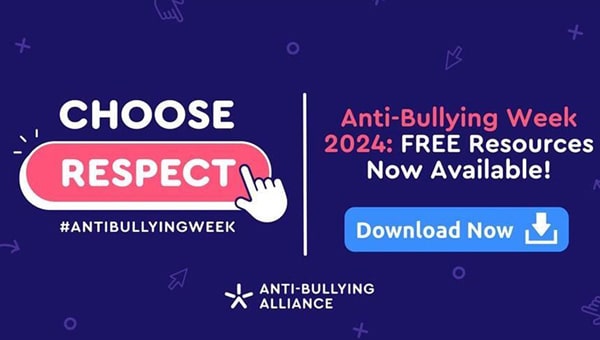How To Write A Killer Blog Post In 9 Easy Steps
How To Write A Killer Blog Post In 9 Easy Steps
Over the last couple of weeks we’ve looked at the 6 compelling reasons why you need to be blogging regularly, and the 5...
Over the last couple of weeks we’ve looked at the 6 compelling reasons why you need to be blogging regularly, and the 5...
Over the last couple of weeks we’ve looked at the 6 compelling reasons why you need to be blogging regularly, and the 5 main types of blog post, including where you can seek inspiration for each one.
So, now that you’re feeling motivated and inspired, it’s time to start hitting the keys. Here’s my 7 step process for putting together a blog post that’s going to engage and delight your audience of teachers:
Step 1: What’s the ‘End User Pay-Off?’
This is the single most critical factor in any blog post. Before you even start typing you have to be absolutely clear about what it is that you want teachers to take away from your post.
You have to reward them for the time they’ve invested in reading your blog by leaving them with actionable things that they can implement in their school.
If you spent two hours watching a murder mystery on TV and then didn’t find out who the killer was you’d feel pretty miffed right? Exactly the same principle applies to your blog post.
Step 2: Structure your content so it appeals
Once you know where you want to take teachers, and you’ve chosen the type of blog post you want to write, you then need to plan the journey and break it down into snackable chunks so teachers aren’t intimidated by its length.
Imagine reading a novel without any chapters, just one unbroken stream of text. What a slog it that would be! We all need chapters so we can take our book to bed at night and have a convenient place to switch off the light and close our eyes.
Hopefully your blog isn’t quite as long as a novel, however the same basic principle applies. Make sure you break down your post by using images, bullet points, or sub-headings, so that it doesn’t feel like a slog for teachers to get through.
Step 3: Lay down some basic ground rules
It’s important that the tone of your post is consistent with the company ethos, so you might want to create a short list of key values that any blog post should adhere to. This will ensure that every member of your team knows what mood their blog post needs to convey.
Here are some key words and phrases that every single Sprint blog has to represent: Friendly, positive, knowledgeable, approachable, delightful, content over faff, helpful not pushy.
Step 4: Keep your introduction short and sharp
Blog introductions are like verses in pop songs. They’re absolutely essential but nobody really cares about them; they just want to hurry up and get to the chorus!
Keep your introduction nice and punchy. Introduce the main themes of the post and whet teachers’ appetites, but don’t overstay your welcome.
Step 5: Remain true to your own voice
Just because there are some core values that every single blog post must be built around, that doesn’t mean every member of your team has to try and write their post in the exact same style.
Every office has a mix of different personalities; that’s what makes it fun coming into work each day. Make sure those personalities come across in the style each blog post is written in.
Your blog is going to be dull as ditchwater if it sounds like it’s been written by a bunch of automatons!
Step 6: Optimise your post for search engines
One of the key aims of your blog is to make it easier for teachers to find you so that you’re less reliant on a solely outbound approach of emailing teachers directly.
So, to help your blog rise to the top of Google rankings, you need to go back over what you’ve written and optimise the post for search.
If you’re able to easily incorporate keywords (words or phrases that teachers commonly use when searching for your products or services) then you should definitely do so; as long as it doesn’t feel unnatural or harm the readability of your post.
To find out more about how to attract and nurture a loyal band of teacher followers, and to benchmark your company against the competition, you may want to download our free inbound marketing to schools audit.
Step 7: Insert hyperlinks to key pages of your website
Once your blog has risen to the top of natural listings, it will often be the first contact teachers have with your business so it’s important that it entices them to explore other areas of your website where they can learn more and where you can delight them with free whitepapers, videos and infographics.
If possible, ensure that the anchor text (the word or words that are hyperlinked) incorporate keywords and link to the pages of your website that you want to rank highly for those keywords.
These are all things that search engines take into account when ranking your web pages for certain keywords so it’s certainly worth making that little bit of extra effort.
Step 8: Come up with an attention grabbing title
The title of your post is almost as important as the subject line in your email campaigns. Many teachers will decide whether or not to read your post simply from the title so you need to get it right.
Go back to the ‘end user payoff’ and try to communicate this in the most succinct way possible. Alliteration, numbers and quirky language are great ways to make your title that little bit snappier.
If it’s easy to incorporate some keywords then great, but don’t crowbar them in there if it detracts from the punchiness of the title.
Step 9: Ask a colleague to proof read your post
It’s tempting to think that re-reading your own blog post a couple of times should be sufficient to pick up any errors.
However, the fact that you’ve written the post makes you precisely the worst person to proof read it because your brain will subconsciously fill in any gaps and correct any mistakes before you’ve even registered them.
Print off the post and pass it to a colleague who has a keen eye for detail. As they are approaching it with no preconceptions they will be able to spot glaring errors and highlight any passages that are unclear or misleading.
Then, when you've completed your killer blog post, don't forget to post it on your social media accounts (with an image) so that it reaches the widest possible audience.
Tags
Marketing to Schools
Selling to Schools
Emailing Teachers
Email Teachers
How to Sell to Schools
Similar Articles
Turn timing your education emails into an artform!
Gain exclusive insights into the timing of your education marketing emails to engage with your target audience and increase your sales potential.
Read PostHow your edu-marketing can support school staff wellbeing
Gain an insight into staff wellbeing to help you shape your marketing strategy into one that will help solve their problems and make you sales in the process.
Read Post

















































